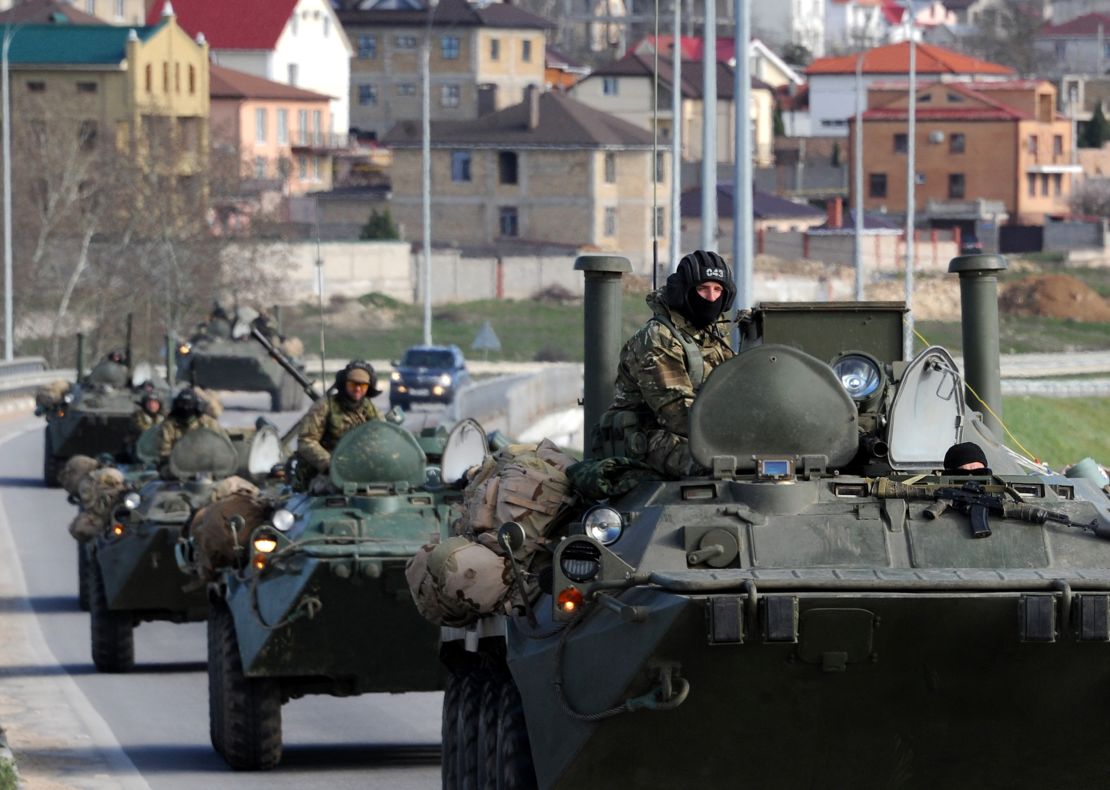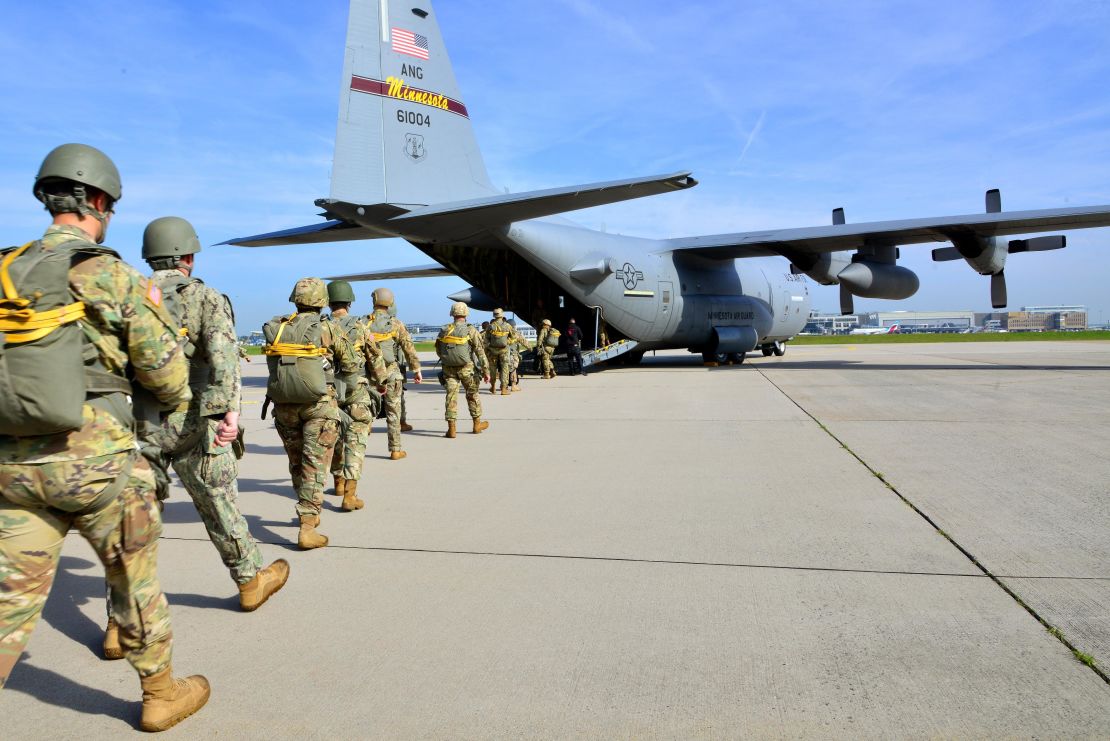When United States and Polish officials signed a deal to support more combat troops in Poland, the country’s foreign minister, Jacek Czaputowicz, said the move put American troops where they needed to be.
“The presence of American troops in Poland enhances our deterrence potential because we are closer to the potential source of conflict,” Czaputowicz said in a joint appearance Saturday with US Secretary of State Mike Pompeo.
“It is important that they should be deployed in Poland, and not in Germany,” Poland’s top diplomat said. “The art of war assures us that the capability of deterrence is higher if the army is deployed in the right place.”
The boost for Poland is part of a Trump administration plan to pull some 12,000 US troops from Germany announced last month. While 1,000 of those will join 4,500 US troops already in Poland, others will move to Belgium or Italy or back to the US, available to be sent back to Europe or other world hotspots should the need arise.
For decades, US personnel stationed in Germany have been viewed on both sides of the Atlantic as the foundation of the post-World War II order. At the height of the Cold War, the US maintained up to 400,000 troops in Europe, the majority in Germany.
As was the case in decades past, the potential source of conflict remains Russia – and the threat of possible incursion, as alluded to by Czaputowicz.
However, elected officials in the US and among its NATO allies said the move to reposition troops could actually benefit Moscow.
Republican US Sen. Mitt Romney last month called the plan “a grave error” and “a gift to Russia.”
The head of the German Parliament’s foreign relations committee, Norbert Roettgen, tweeted: “Instead of strengthening #NATO it is going to weaken the alliance. The US’s military clout will not increase, but decrease in relation to Russia and the Near & Middle East.”
How could that “military clout” decrease? Deterrence is one example.
The last large US reduction of its troop presence in Germany occurred in 2012. Two years later, Russian troops moved into the Crimea and Moscow annexed the Ukrainian territory, spiking tensions with NATO.

US and European military experts tell CNN the new troop reduction plan would provide few benefits on any potential future battlefield, and certainly not enough to justify its enormous cost, estimated to be in the billions of dollars.
Specifically, the Trump administration plan pulls 11,900 troops from Germany, redeploying 5,400 of those elsewhere in Europe and sending the remaining ones back to the US with some of them rotating back to Europe at some point.
Key movements include command and control centers going from Germany to Belgium as well as Army airborne troops and Air Force F-16 fighters moving from Germany to Italy.
Where is the right place for US troops?
Nick Reynolds, a land warfare research analyst at the Royal United Services Institute (RUSI) in London, doesn’t see much benefit from the US plans.
“Moving ground troops to Belgium and Italy puts them farther away from areas in which they are likely to be needed,” Reynolds said. “Even if they went to northern Italy, and a crisis happened to occur in southeastern Europe, transport links would make moving them slightly more time consuming.”
Consider where the possible flashpoints are.
In a paper written earlier this year, before the troop movements were announced, Iulia-Sabina Joja, a post-doctoral fellow at the Foreign Policy Institute of the Johns Hopkins School of Advanced International Studies, painted three scenarios that involve conflict around the Black Sea, including new flareups with Ukraine near the Crimea.
Getting ground forces in numbers to those spots from Italy means getting them through the mountains of the Alps, which would not be in the way of a move from Germany.
Even though Poland is closer to Russia, the potential Black Sea hotspots and another possible flashpoint along the border with the NATO allies in the Baltics, boosting troops in that country isn’t necessarily the answer, Reynolds said.
“If ground troops were moved to Poland then they would potentially be able to get to where they were needed faster, though they also start (depending where they are in Poland) to become vulnerable in the (unlikely) event of a Russian offensive that achieves operational surprise,” Reynolds said.

Bastian Giegerich, director of defense and military analysis at the International Institute of Strategic Studies in London, questioned the effectiveness of rotating troops back into Europe from the United States.
“Aside from being expensive, troops on rotational deployment will struggle to develop a similar degree of local knowledge and links to host nation armed forces,” Giegerich said.
And while rotational deployments would give the Pentagon some flexibility to respond to hotspots worldwide, there is a price to be paid in the European theater: Fewer boots on the ground mean less deterrence than if they were there, Giegerich said.
“It is a fine balance to strike – the ability to respond to contingencies around the globe with a bigger strategic reserve pool in the US might make it somewhat more likely that those contingencies arise in the first place,” he said.
Retired US Army Lt. Gen. Mark Hertling, now a CNN military analyst, has years of military experience in Europe, beginning in 1975 and continuing intermittently until 2011.
“Germany is key, because it is central to both the ‘old Europe’ to the west and the newer states to the east,” Hertling said.
“The rail and airports are terrific in Germany, and given its centralized position and ease in dealing with the government of Germany, we could fly anywhere, as well as bring allies into the training center at Grafenwoehr,” he said. The Trump administration’s German pullout sacrifices those efficiencies, Hertling said.
“The POTUS saying he’s going to put forces into Italy and Belgium makes no sense. Italy is south of the Alps, with challenges in the government, and Belgium is west – farther away from the eastern block of nations.”
And then there’s the cost. Hertling points out the US military has spent billions over the years to make Germany its central location in Europe. Pulling out of those bases means spending money on new infrastructure that’s already been paid for in Germany.
Numbers vs. location
But where US troops are in Europe may be missing a bigger point, said Reynolds, the RUSI analyst. “What is a more important issue is that the US does not keep adequate forces in Europe if the intention is to be able to quickly respond to a contingency involving Russian aggression,” he said.
And the NATO allies can’t do the job alone. “NATO forces are also working with too few units compared to the size of Russian forces that they would potentially face, at least until larger and heavier US forces could arrive from the continental US,” Reynolds said.
The Trump administration’s pullout from Germany doesn’t address another US/NATO deficiency in Europe – it doesn’t have enough runways that can handle alliance fighter aircraft.
“This is absolutely the issue that NATO faces in the air domain with being unable to adequately disperse its aircraft – particularly fighter and strike aircraft, which need longer and better-reinforced runways – to avoid having them concentrated on a few airfields that are therefore easier to target with long-range precision fires, either destroying the aircraft on the ground or negating their ability to use airfields by rendering the runway unserviceable,” Reynolds said.
In any event, the plan would take years execute and Congress would have to find the billions of dollars needed to make it happen. And with a US election less than three months away, new thinking could emerge with a possible new occupant of the White House.
The Germany pullout is far from a done deal.
CNN’s Ryan Browne, Zachary Cohen and Nic Robertson contributed to this report.




